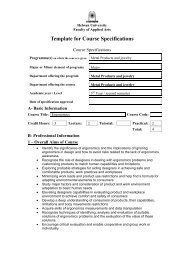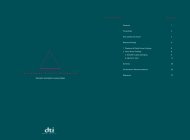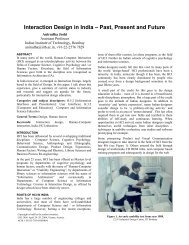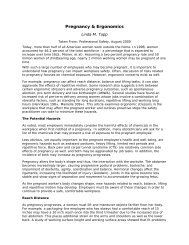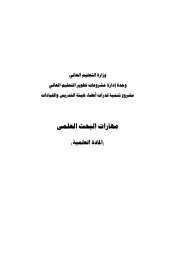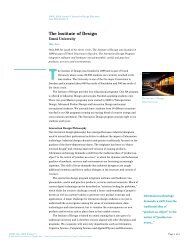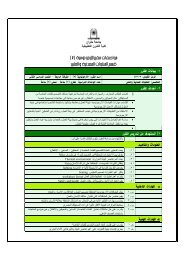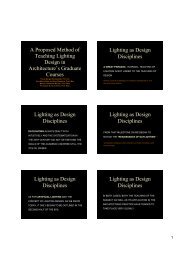Space Requirements for Wheeled Mobility - University at Buffalo ...
Space Requirements for Wheeled Mobility - University at Buffalo ...
Space Requirements for Wheeled Mobility - University at Buffalo ...
- No tags were found...
Create successful ePaper yourself
Turn your PDF publications into a flip-book with our unique Google optimized e-Paper software.
• Overall, the preliminary research plans were well-received by Workshopparticipants. There was no criticism about the specific methods proposed inany of the projects summarized during the present<strong>at</strong>ion. Strengths identifiedby participants were the multi-site approach proposed in many of the projects,the inclusion of a variety of wheeled mobility devices, the emphasis onconsistent d<strong>at</strong>a g<strong>at</strong>hering methods, and the inclusion of both simple and highlysophistic<strong>at</strong>ed approaches.• The major limit<strong>at</strong>ion of the approach identified by some participants was thescope of the research plan. They argued th<strong>at</strong> to provide the in<strong>for</strong>m<strong>at</strong>ionneeded <strong>for</strong> standards development requires even gre<strong>at</strong>er numbers ofindividuals, a gre<strong>at</strong>er variety of individuals and a more in<strong>for</strong>m<strong>at</strong>ion aboutfunctional task per<strong>for</strong>mance. Workshop participants also emphasized theneed <strong>for</strong> more work in the field versus the labor<strong>at</strong>ory.There were six major recommend<strong>at</strong>ions about the preliminary research agenda:1. Partner with other sponsors in the U.S. and other countries to expand theresearch plan. The current plan is a good start but much more needs to bedone. Use of anthropometry in the development of space requirements <strong>for</strong>standards requires th<strong>at</strong> all variables include demographic and devicecharacteristics are considered in the evalu<strong>at</strong>ion of the design parameter.2. Include field research activities designed to provide a better understanding ofthe most important environmental barriers in commercial and public buildings,as well as transport<strong>at</strong>ion systems.3. Ensure th<strong>at</strong> the plans <strong>for</strong> keeping d<strong>at</strong>a ef<strong>for</strong>ts consistent across multiple sitesare sound so th<strong>at</strong> d<strong>at</strong>a from these different sources can be combined.4. Ensure th<strong>at</strong> careful <strong>at</strong>tention continues is paid to the demographic variables,including the types of wheeled devices and c<strong>at</strong>egories of disability, so th<strong>at</strong>in<strong>for</strong>med design decisions can be made.5. Continue to explore the potential value of digital human modeling in spacerequirements <strong>for</strong> standards development.6. The experimental protocols used <strong>for</strong> this research agenda should be peerreviewedbe peered reviewed. A process should be developed to allow inputfrom an intern<strong>at</strong>ional group of stakeholders.In conclusion, the increasing prevalence of wheeled mobility device users and thetrends towards larger and heavier devices suggest th<strong>at</strong> the current spacerequirements <strong>for</strong> wheeled mobility accessibility need to be re-evalu<strong>at</strong>ed. Thecurrent research plans are a good start but more thought must be given to how toexpand the plan. It is likely th<strong>at</strong> a combin<strong>at</strong>ion of basic anthropometric research,<strong>Space</strong> <strong>Requirements</strong> <strong>for</strong> <strong>Wheeled</strong> <strong>Mobility</strong> 13



